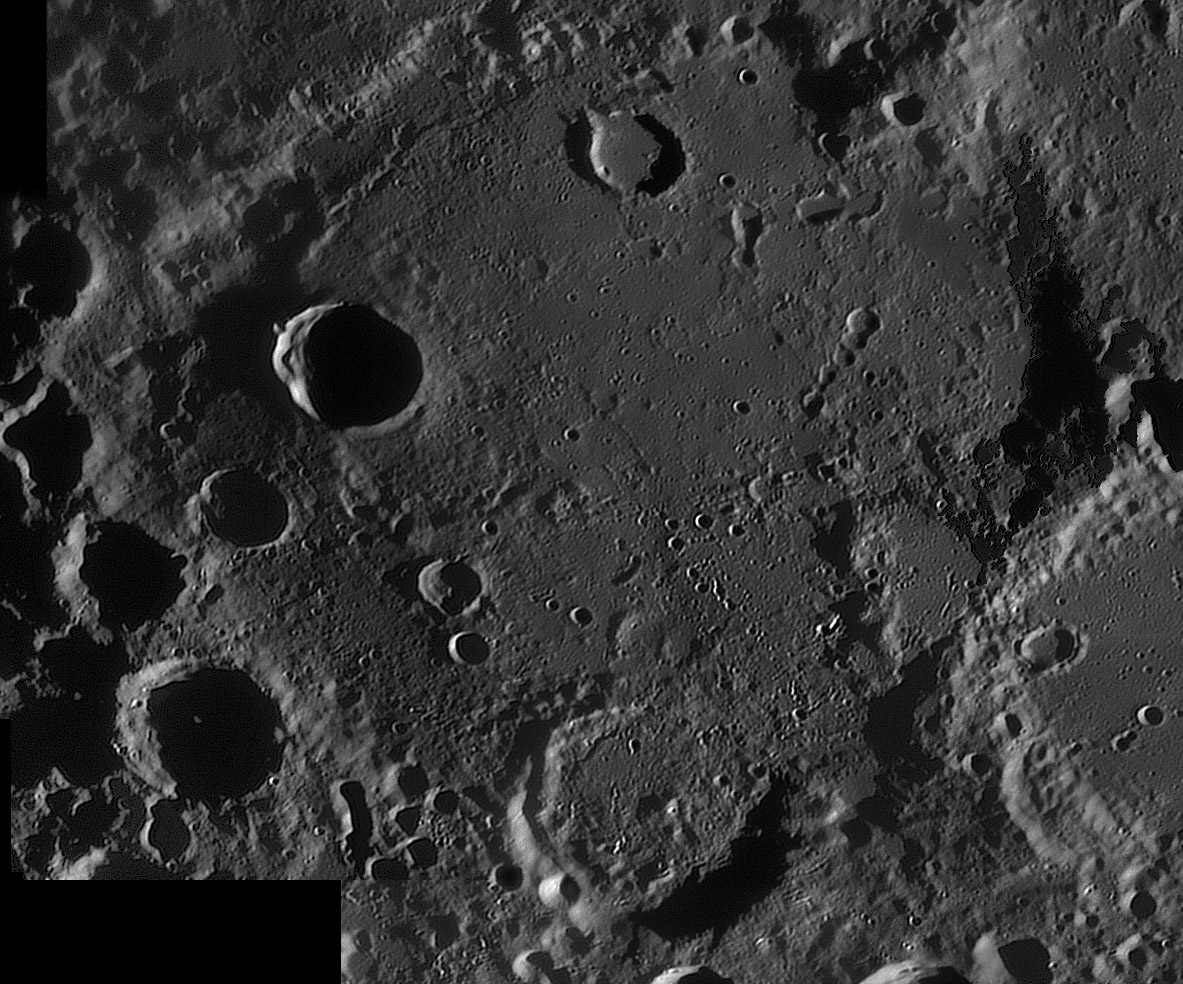May 28, 2022
Cassini & Q
Originally published July 5, 2012

image by Damian Peach, Selsey, UK
Deslandres, or Hell Plain as it was known until 1948, is one of the largest non-basins on the Moon.
Its floor contains a variety of features of different origins. Paralleling the northwestern rim is a fissure
that always appeared to have a raised rim; with the Quickmap measuring tool I see that it rises 400
m on the left, but only about 100 m on the right. This is consistent with other measures - the lowest
areas seem to be around the edges of the crater, and the main floor is rather flat - ignoring all the
subsequent craters. At the upper right there is a small patch of mare basalt and nearby a 30 km long
line of 5 or 6 flat-floored craters that may be secondaries from Tycho although they aren't quite radial.
The most brilliant feature in Deslandres is a diffuse bright spot first noticed by Cassini and since called
Cassini's Bright Spot. Two small craters - about 30 km southwest of the crater chain - are near the
center of the bright spot. Discussions ensued about which of the two craters is the source of the bright
spot. LRO NAC images solve the question. The largest crater, 3.7 km wide Hell Q, is a very fresh impact
pit with melt deposits on its floor and streamers of melt to the east, draping the other softer crater. Hell
Q appears to have been formed by an oblique impact with its bright ejecta elongated to the east and
southeast. Like Censorinus, Hell Q seems to have a larger and brighter bright nimbus than most small
craters, perhaps they are simply younger than most similar craters.
Chuck Wood
Technical Details
2012 03 01 2002 UT. 356mm reflector. PGR Flea3.
Related Links
Rükl plate 65
Damian's 2012 lunar images gallery
Yesterday's LPOD: Balancing Act
Tomorrow's LPOD: Classic Sameness
COMMENTS?
Register, Log in, and join in the comments.



